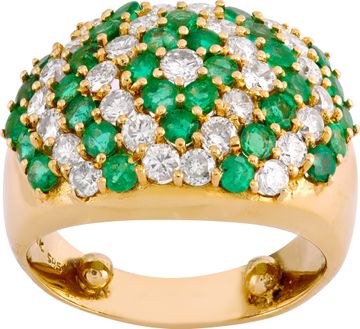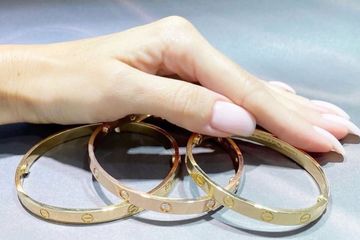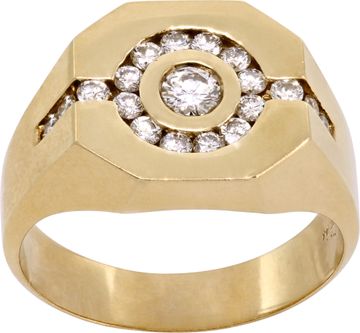The Evolution of Cartier Watch Design Through the Decades
Since its founding in 1847, Cartier has established itself as one of the world's most prestigious jewelry and watchmaking houses. While the brand began as a jeweler, its venture into horology has produced some of the most iconic and influential watch designs in history. The evolution of Cartier's timepieces reflects not only changing aesthetic preferences but also technological advances and cultural shifts throughout more than a century of watchmaking excellence.
The Foundation Years: 1900s-1910s
Cartier's journey into watchmaking began at the turn of the 20th century when Louis Cartier recognized the potential for wristwatches as men began to favor them over pocket watches. The brand's first major breakthrough came in 1904 with the creation of the Santos watch, designed for Brazilian aviator Alberto Santos-Dumont. This square-cased timepiece featured exposed screws on the bezel and a leather strap, establishing design elements that would become Cartier signatures.
The Santos represented a radical departure from the ornate pocket watches of the era. Its clean, geometric lines and practical design reflected the emerging modernist aesthetic and the needs of the new century. The watch's square case was revolutionary, as most timepieces of the period featured round cases. This bold design choice demonstrated Cartier's willingness to innovate and challenge conventional wisdom.
Art Deco Influence: 1920s-1930s
The 1920s and 1930s marked Cartier's golden age of design innovation, coinciding with the Art Deco movement. During this period, the brand introduced several of its most enduring designs, including the Cartier Tank watch in 1917, which became available to the public in the 1920s. Inspired by the tracks of World War I tanks, the Tank featured a rectangular case with parallel vertical lines that created a distinctive architectural appearance.
The Art Deco influence extended beyond the Tank to other Cartier creations. The brand embraced geometric shapes, bold lines, and elegant proportions that characterized the movement. Cartier's designers incorporated colored gemstones, enamel work, and precious metals to create timepieces that were as much jewelry as they were functional instruments. The Tortue watch, introduced in 1912 but refined during this period, showcased the brand's ability to create organic, curved forms that still maintained the geometric precision associated with Art Deco design.
Mid-Century Refinement: 1940s-1960s
The middle decades of the 20th century saw Cartier refining its existing designs while maintaining the essential character that made them distinctive. During World War II and the post-war period, materials became more precious due to shortages, leading to more restrained designs that focused on perfect proportions and finishing rather than elaborate decoration.
The 1950s and 1960s brought a renewed interest in luxury goods as economies recovered and prospered. Cartier responded by introducing variations of its classic designs, including different sizes and new bracelet options. The brand also began experimenting with new case materials and movement technologies, though always within the framework of its established aesthetic principles.
This period saw the introduction of the Cartier Crash in 1967, a surreal timepiece inspired by Salvador Dalí's melting clocks. The watch's distorted, oval case represented one of Cartier's most avant-garde designs, demonstrating the brand's continued willingness to push boundaries while maintaining its commitment to craftsmanship and luxury.
The Quartz Revolution and Response: 1970s-1980s
The 1970s brought the quartz crisis, which threatened traditional Swiss watchmaking. Cartier, like many luxury brands, had to navigate this challenging period while maintaining its identity and heritage. Rather than abandoning mechanical movements entirely, Cartier strategically incorporated quartz technology into some of its designs while continuing to produce mechanical timepieces for collectors and enthusiasts.
During this period, Cartier introduced the Panthere collection, featuring sleek, integrated bracelet designs that reflected the era's preference for precious metal sports watches. The Panthere's flexible bracelet construction and refined case design demonstrated Cartier's ability to adapt to changing tastes while maintaining its distinctive aesthetic identity.
The 1980s saw a renewed appreciation for luxury and craftsmanship, allowing Cartier to reemphasize its mechanical watchmaking heritage. The brand introduced complications such as moon phases, multiple time zones, and perpetual calendars, showcasing its technical capabilities alongside its design prowess.
Modern Renaissance: 1990s-2000s
The final decades of the 20th century and the early 2000s marked a renaissance for Cartier watchmaking. The brand established its own manufacturing capabilities, allowing greater control over movement production and enabling more complex complications. This period saw the introduction of the Pasha collection, with its distinctive round case, prominent crown guard, and bold Arabic numerals.
Cartier also revisited its archive during this period, reintroducing updated versions of classic designs like the Santos and Tank. These modern interpretations maintained the essential character of the originals while incorporating contemporary materials, improved water resistance, and modern movements. The brand's ability to refresh its classics without losing their fundamental appeal demonstrated the timeless nature of Cartier's design philosophy.
Contemporary Innovation: 2010s-Present
The modern era has seen Cartier embrace both tradition and innovation with equal enthusiasm. The brand has introduced new materials such as ADLC (Amorphous Diamond-Like Carbon) coating and ceramic, while also developing innovative movement technologies like the ID Two concept watch, which eliminated the need for lubrication through advanced materials science.
Recent years have brought refined versions of classic models, such as the Tank Must and Santos-Dumont, alongside entirely new collections like the Drive de Cartier. These contemporary designs maintain Cartier's commitment to geometric purity and elegant proportions while incorporating modern manufacturing techniques and materials.
Enduring Design Principles
Throughout its evolution, Cartier watch design has remained anchored by several consistent principles. The brand's commitment to geometric purity, whether in the square Santos, rectangular Tank, or round Pasha, has created a distinctive aesthetic language that transcends fashion trends. The use of Roman numerals, blued steel hands, and cabochon crowns has become synonymous with Cartier's identity.
The evolution of Cartier watch design reflects not just changing aesthetics but also the brand's ability to balance innovation with respect for its heritage. Each new generation of Cartier timepieces builds upon the foundation established over more than a century of watchmaking, ensuring that the brand's future remains as bright as its illustrious past. This commitment to evolution within tradition has made Cartier watches enduring symbols of luxury, craftsmanship, and timeless design.
Your Journey to Cartier Excellence
Acquiring a fine Cartier timepiece is more than just a purchase — it's an invitation into the world of horological artistry and timeless design. Whether you're drawn to the aviation heritage of a Santos, the architectural elegance of a Tank, or the contemporary sophistication of a Panthère, each timepiece represents over a century of innovation, craftsmanship, and Parisian savoir-faire. Understanding the evolution behind these iconic designs—from the geometric purity of Art Deco influences to modern manufacture movements—enhances the ownership experience and deepens your appreciation for Cartier's enduring contribution to watchmaking excellence.
Equally important to understanding your Cartier is maintaining it with the care it deserves. A regular watch repair is vital to ensure the movement remains accurate and functional, especially given the precision required for Cartier's refined mechanisms. A full Cartier service includes disassembly, inspection, lubrication, and calibration of the movement, ensuring every function operates flawlessly, every hand sweeps gracefully, and every crown operation remains smooth yet precise. Proper maintenance protects not only your watch's performance but its long-term value and collectability as a piece of horological history.
When it's time to evolve your collection or sell your watch, Sell Us Your Jewelry offers a premium solution for owners of luxury Cartier timepieces. Whether you're selling a vintage Tank from the golden Art Deco era or a modern Santos with contemporary manufacturing, our transparent evaluation process ensures you receive competitive market value. Our team of watch experts carefully inspects every movement, assesses complications and design heritage, and considers provenance, condition, and the prestige of the Cartier maison in every quote. If you've ever wondered, "Where can I sell my luxury Cartier and be sure it's understood and fairly valued?" — look no further. From iconic classics to contemporary masterpieces, we are here to help you navigate every step of your Cartier journey.
Caring for Your Diamond Jewelry: Essential Maintenance Tips
NEXT ARTICLE
Elevate Your Summer 2025 Style: Pairing Pre-Owned Rolex Leather Straps with the Hottest Fashion Trends











